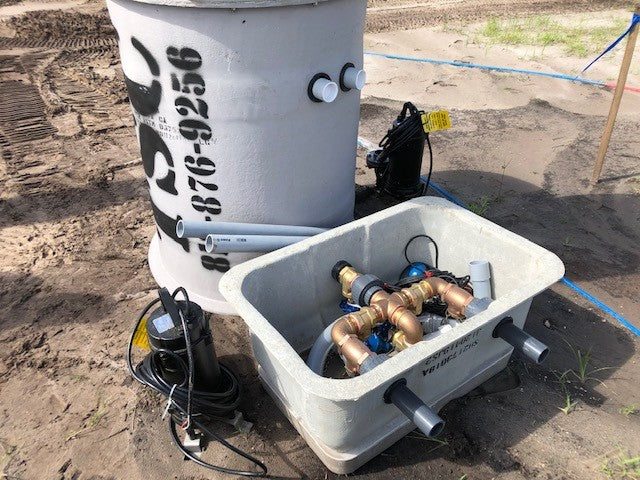
What is a lift station?
Share
What is a Lift Station?
In our modern urban landscapes, wastewater management plays a crucial role in maintaining public health and preserving the environment. One essential component of this infrastructure is the lift station, a critical system that ensures the efficient transportation of wastewater from lower to higher elevations, ultimately reaching its destination at treatment facilities. While lift stations might not be the most glamorous aspect of urban planning, they are undoubtedly indispensable for maintaining the cleanliness and sanitation of our communities.
Understanding the Need for Lift Stations:
In densely populated areas or regions with challenging topographies, gravity alone is often insufficient to move wastewater effectively from homes, businesses, and industrial facilities to the treatment plants. This is where lift stations come into play. A lift station, also known as a pumping station or sewage pumping station, is a mechanical facility equipped with pumps and other components designed to lift wastewater to higher elevations, enabling it to continue its journey through the sewer system.
Components of a Lift Station:
-
Pumps: The heart of a lift station lies in its pumps. These devices are responsible for lifting the wastewater and moving it through the sewer pipes. Various types of pumps are used in lift stations, including centrifugal pumps and submersible pumps, each serving specific purposes depending on the station's requirements and capacity.
-
Wet Well: The wet well is a storage chamber within the lift station where wastewater collects before being pumped out. It is crucial for ensuring a steady flow of wastewater and allowing the pumps to operate efficiently. Lift stations can have different designs of wet wells, such as a dry-pit arrangement where the pumps are housed above the ground, or a submersible configuration with the pumps placed directly in the wet well.
-
Control Panel: To monitor and regulate the lift station's operation, a control panel is installed. The panel oversees pump activation, shutdown, and performance, ensuring a reliable and safe functioning of the station.
-
Alarms and Sensors: Lift stations are equipped with various sensors to detect water levels, pump performance, and potential issues. Alarms are integrated to notify operators if any irregularities occur, such as pump failures or high water levels, allowing them to take swift action and prevent potential hazards.
Maintenance and Challenges:
Lift stations require regular maintenance to ensure smooth operations and longevity. Blockages from debris, grease, or other solid materials can impede the pumps' efficiency and lead to costly repairs or overflows. Additionally, the risk of odors and corrosion makes it essential to manage hydrogen sulfide and other hazardous gases effectively.
Another challenge arises during power outages or natural disasters when lift stations heavily rely on electricity. Station operators often incorporate emergency power generators to prevent backups and maintain continuous wastewater transportation during such events.
Environmental Impact:
The proper functioning of lift stations is paramount in protecting the environment. When lift stations fail or are not adequately maintained, overflows can occur, leading to untreated wastewater contaminating rivers, lakes, or groundwater, endangering aquatic life and posing health risks to the public. Thus, investing in well-designed lift stations and establishing comprehensive maintenance programs is crucial for minimizing their environmental impact.
Conclusion:
Lift stations may not be visible to the public eye, but their importance in maintaining wastewater systems and safeguarding public health cannot be overstated. These unsung heroes of urban infrastructure work tirelessly to transport wastewater from lower to higher elevations, ensuring efficient treatment and protection of our environment. By understanding their purpose and investing in their maintenance and improvement, we can continue to build sustainable and healthy communities for generations to come.
